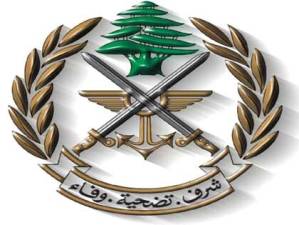 As Lebanon hovers precariously on the brink of new upheaval, rival forces are battling for control of the army: the Western-backed government and the United States on one side, Hezbollah and its Iranian and Syrian mentors on the other.
As Lebanon hovers precariously on the brink of new upheaval, rival forces are battling for control of the army: the Western-backed government and the United States on one side, Hezbollah and its Iranian and Syrian mentors on the other.
The outcome of this increasingly intense competition will to a large extent determine where Lebanon is headed — and whether Iran secures complete uncontested control of a frontline base on Israel’s doorstep.
And right now Hezbollah seems to be winning. It has become the strongest military force in Lebanon, thanks to a steady flow of weapons, training and funding by Iran and Syria over the years but particularly since the Shiite group’s 2006 war with Israel.
When the 15-year Lebanese civil war ended in October 1990, Hezbollah was the only major militia to hold on to its arms, claiming it needed them to fight Israeli occupation. That ended May 24, 2000, when the Israelis withdrew from their last foothold in South Lebanon 22 years after its first invasion.
But Hezbollah, with strongholds in the north, Beirut and the south, still refused to disarm, raising fears it — or Iran — had designs on eventually taking over the country.
It still refuses to give up its arsenal, or merge with the state army, in defiance of U.N. Security Council resolutions.
And no one, least of all U.S.-backed Prime Minister Saad Hariri, is prepared to the take risk of trying to make it do so.
“Faced with the impossibility of trying to resolve the question of Hezbollah’s weapons, both Hezbollah and Hariri are trying to draw the army closer to their side, in order improve their political position,” Oxford Analytica said in Sept. 3 analysis.
“Given the structural constraints that work against the army’s clear alignment with either, it has tried to stay neutral and passive.
“This stance may be unsustainable in the event of wider clashes. However, a more active approach would create a significant risk of fragmentation along sectarian lines.”
Not for the first time. During the 1985-90 civil war, the army splintered along sectarian lines: Maronite Catholic, the main Christian sect, as well as Shiite, Sunni and Druze Muslim.
In 1984, Muslim forces, including troops, took over West Beirut, breaking with the Maronite presidency in East Beirut.
Once Syria withdrew the last of its military forces from Lebanon in April 2005, under international pressure triggered by the February assassination of billionaire former Prime Minister Rafik Hariri, Lebanon’s leading statesman, the Americans saw an opening to build up the army to support the pro-Western government that emerged from the upheaval.
Since 2006, Washington has provided the Lebanese armed forces, which has traditionally been kept weak by the political barons who control the various sects, with military aid worth $700 million.
But after the 56,000-strong army, still outgunned by the battle-hardened Hezbollah, clashed with Israeli forces in August, the first such engagement in years, the U.S. Congress cut off the aid.
The bipartisan lawmakers involved said they feared the army was moving too close to Hezbollah and that U.S. equipment could find its way to Hezbollah to be used against Israel.
Up to that point, the army had stayed on the sidelines in the sectarian feuding, although an estimated 60 percent of its personnel is Shiite.
Given Hezbollah’s confrontation with the government of Saad Hariri, the Sunni leader and son of the slain prime minister, over the U.N.-mandated special tribunal’s widely expected indictment of Hezbollah operatives in the 2005 assassination, there are fears in some quarters the group may seek to mount a coup.
The controversial visit last week of firebrand Iranian President Mahmoud Ahmadinejad to Lebanon was widely seen by Hezbollah’s opponents as a sign Tehran now sees Lebanon firmly in its grip.
Hezbollah denies it has it has a coup in mind. But it has turned its guns on its fellow Lebanese before — something Hezbollah leader Hassan Nasrallah had vowed his movement would never do.
In May 2008, its fighters invaded Sunni West Beirut after the government sought to dismantle the group’s private communications network. More than 80 people were killed in what was a serious setback for Saad Hariri’s coalition.
On Aug. 24, Hezbollah clashed again with Beirut’s Sunnis in the Bourj Abi Haidar district. Three people, including a Hezbollah chieftain, were killed. UPI
Leave a Reply
You must be logged in to post a comment.